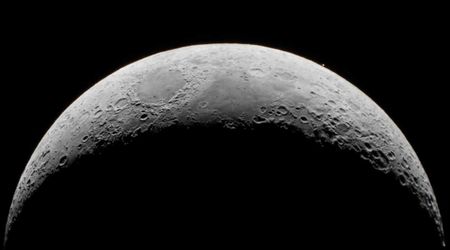June's 'Strawberry Moon' was the lowest in about 20 years — here’s why this rare phenomenon occurred

The full Moon of June, also known as the 'Strawberry Moon,' left astrophiles awestruck as it was the lowest-lying full Moon in the sky in 20 years. This phenomenon will not occur again until 2043, as per BBC Sky at Night Magazine. The low position of the moon was caused by an event called the "major lunar standstill" or "lunistice." UK archaeologist and historian Jennifer Wexler explained how this pertained to an aspect of the Moon cycle. Compared to the Sun, the lunar cycle is much more rapid, as it changes over 29.5 days from a thin crescent to a full Moon and back.

Aligning with this, the moonrise and moonset shifts from northernmost to southernmost extents and change back in 27 days. “Through its phases, the Moon acts as timekeeper for societies around the globe, past and present. But the Moon also has a further cycle that is far longer,” Wexler added. The limits of moonrise and moonset also change over time and reach a point of maximum distance on the horizon. When the northernmost and southernmost positions of moonrise and moonset are the most apart, the event is known as "lunistice."
Once the cycle entered the major lunar standstill, which only happened every 18.6 years, it stayed the same for two years. During this period, the distance between the two points could be extremely far apart. The major lunar standstill was a slow cycle, and after 2025, the path of the Moon would start shifting. Such an extreme low would not be achieved by the celestial object until the next standstill in 2043. Hence, the 2025 Strawberry Moon was an extremely rare sight in the summer night sky on June 10, with peak brightness in the early hours of June 11.
Strawberry Moon spotted tonight 🌕
— Latest in space (@latestinspace) June 11, 2025
Lowest and fullest we will see until 2043 pic.twitter.com/lhuAKpTYRh
Experts advised stargazers on how to witness the beautiful sight, and suggested an unobstructed view of the southeast horizon. A Moonrise calculator can come in handy to calculate the time and position for the perfect sight during such celestial events. According to the Manchester Evening News, due to the effect of the 'Moon illusion,' the Strawberry Moon often looks enormous and even appears orange at the horizon. Though small telescopes and binoculars are a bonus, a naked-eye view of a full Moon, shining near the famous red star Antares, cannot be matched.

The name “Strawberry Moon” does not correspond to this particular event, but is symbolic of the first full moon of summer. Every full moon is given a traditional name that corresponds to a natural event or seasonal change at that time. Much like February’s Snow Moon or July’s Buck Moon, June’s full Moon is the start of summer and the strawberry harvest season. According to the BBC Sky at Night Magazine, the term 'Strawberry Moon' was believed to have originated from the Native American culture, specifically the Algonquin tribe.
get ready to see the stunning strawberry moon glowing over the tri-state tonight!
— Kelcey (@kelcey_tweets) June 10, 2025
this moon will sit lower in the sky than it has in nearly 19 years, a rare event not happening again until 2043. best viewing is around 8:35 pm et when it’s brightest.
named by native american… pic.twitter.com/KDH2U3NiRr
This was because this tribe was known to have used the term to indicate the beginning of wild strawberry picking in the northeastern United States. The specialty of the name ended there, as it did not mean that the Moon would appear to be pink or red like a strawberry. These were only traditional markers that signified a localisation of natural cycles. However, the scattering of light in the denser atmosphere could contribute to the appearance matching the local name.









